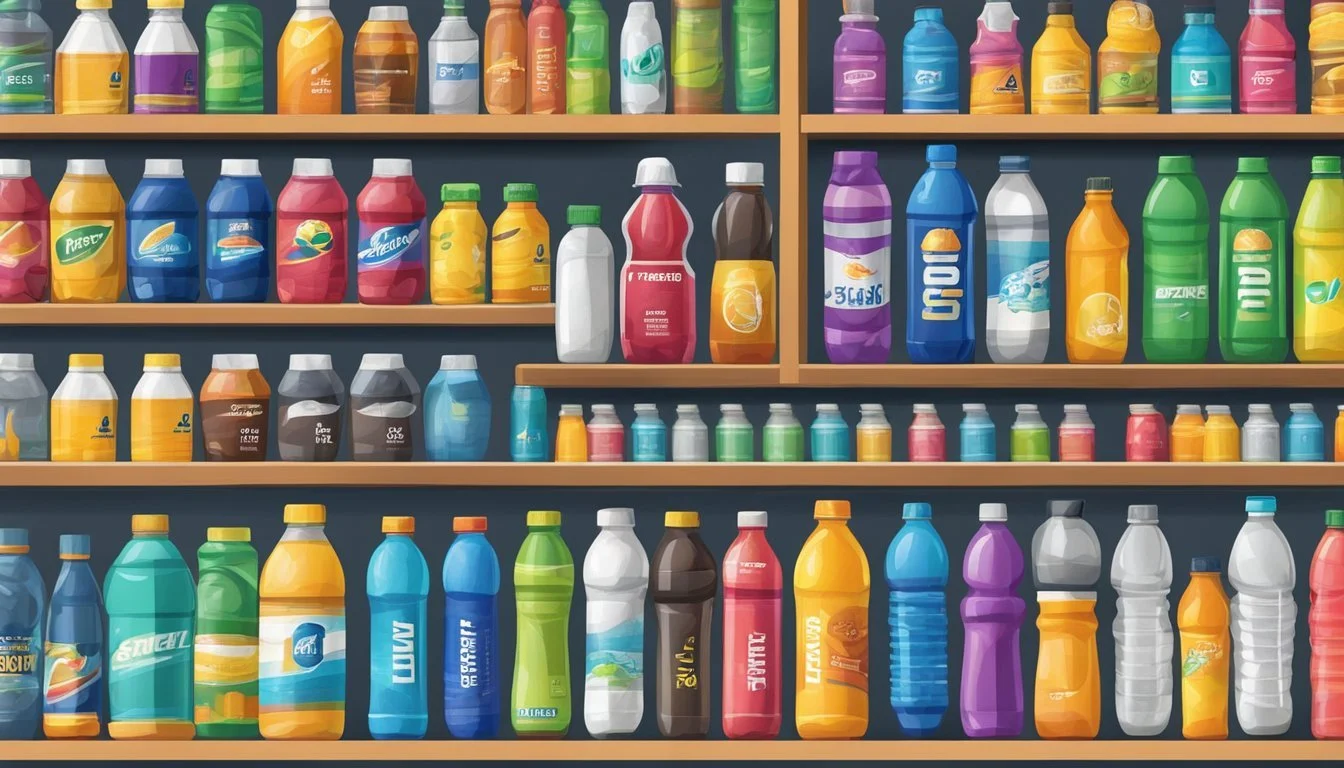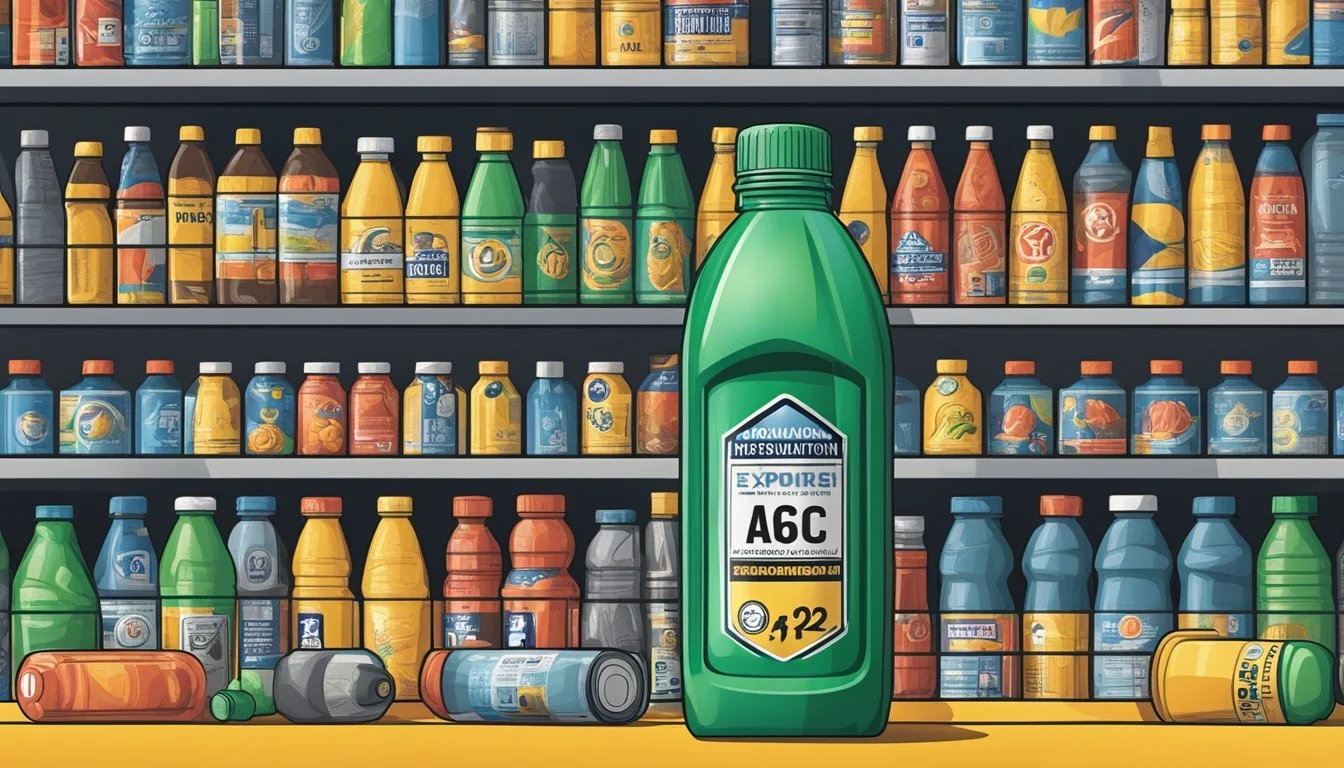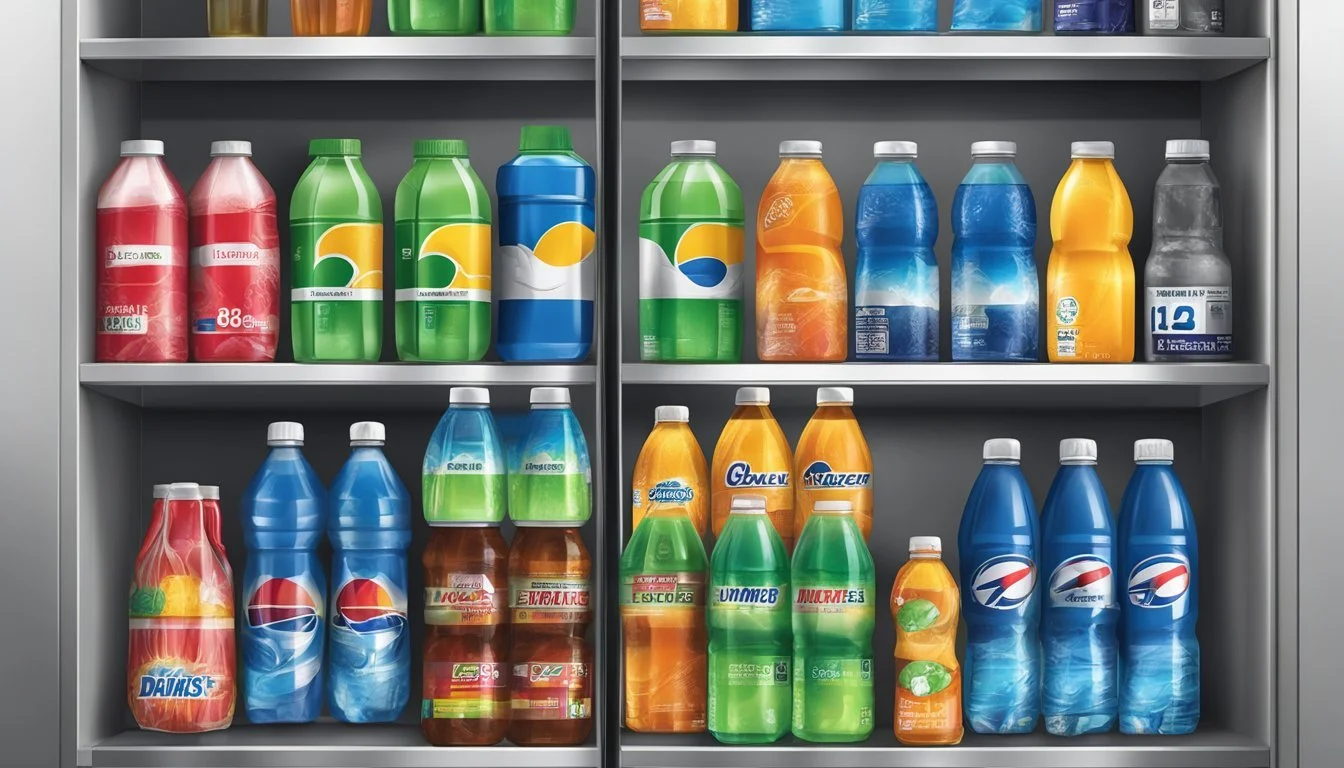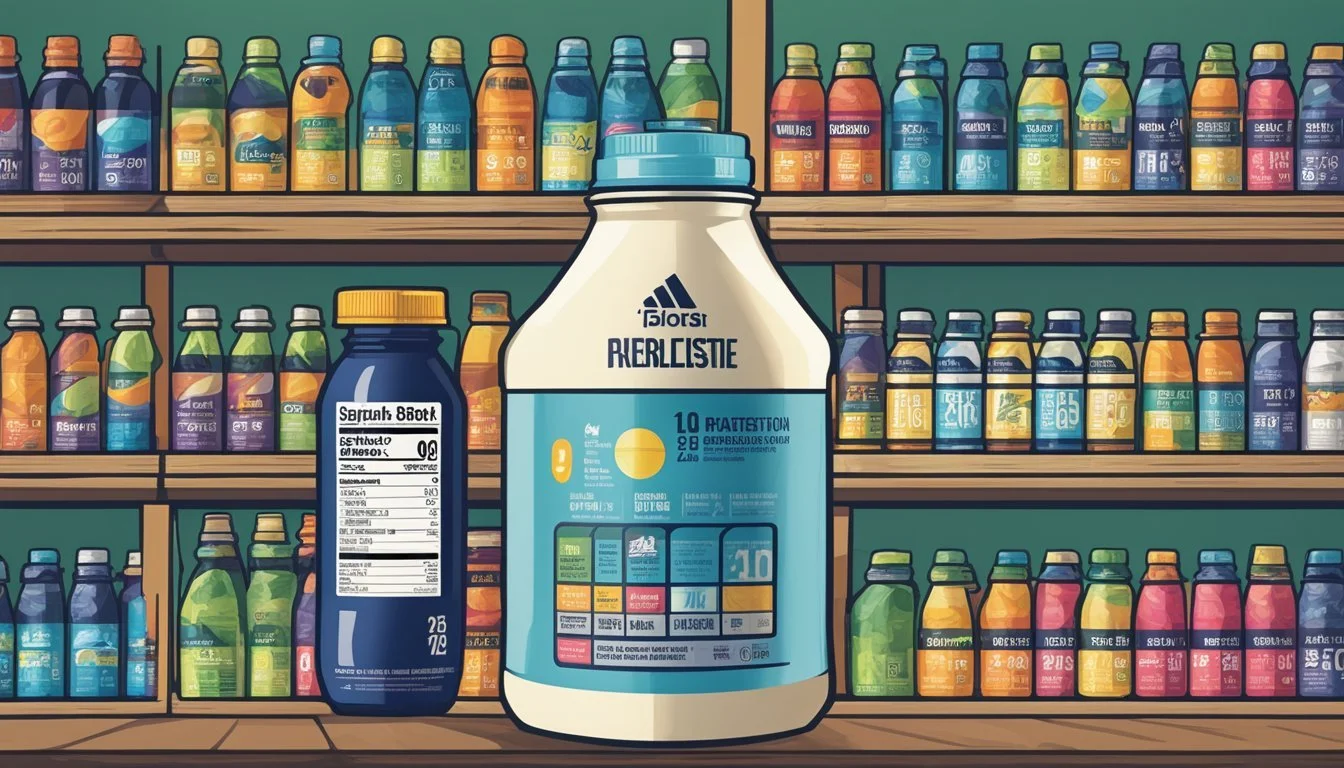Do Sports Drinks Expire?
Understanding Shelf Life and Safety
Do sports drinks expire? This question is important for athletes and anyone who relies on these beverages for hydration and energy. Sports drinks do have a shelf life, and it’s crucial to know how long they can be safely consumed to avoid any potential health issues.
An unopened sports drink can last up to 9 months from its production date. Once opened, the drink should ideally be consumed within 3 to 5 days if stored in the refrigerator to maintain its quality and flavor. Beyond that timeframe, the drink's taste and effectiveness may deteriorate, making it less enjoyable and beneficial.
Understanding these timelines helps ensure that the sports drinks you consume remain safe and effective. By paying attention to expiration dates and proper storage methods, you can make the most out of your sports beverages.
Understanding Sports Drinks
Sports drinks are beverages designed to help athletes and active individuals rehydrate, restore electrolytes, and replenish energy. These drinks typically contain a combination of water, carbohydrates, and electrolytes, making them suitable for consumption during or after physical activity.
Composition and Benefits
Sports drinks are primarily composed of water, sugars (carbohydrates), and electrolytes. Carbohydrates in the form of sugars provide an immediate source of energy. Electrolytes, such as sodium and potassium, are essential for balancing the fluids in the body, supporting muscle function, and preventing cramps.
Benefits of sports drinks include rapid hydration and replenishment of lost nutrients. They help maintain performance and delay fatigue during prolonged or intense activities. By restoring energy and electrolytes, these drinks play a crucial role in recovery.
Electrolytes and Hydration
Electrolytes are minerals that carry an electric charge and are vital for many bodily functions. Sodium helps retain fluids consumed and ensures proper muscle function. Potassium supports cell function and maintains fluid balance in the body.
Proper hydration is essential for athletes, as dehydration can lead to decreased performance and health issues. Sports drinks aid in rehydration by quickly replacing lost fluids and electrolytes. This makes them particularly effective during long workouts or in hot conditions.
Comparing Brands: Gatorade and Powerade
Gatorade and Powerade are two of the most popular sports drink brands, each offering unique formulations and flavors. Gatorade is known for its balance of carbohydrates and electrolytes and comes in various product lines like Gatorade Thirst Quencher and Gatorade Zero.
Powerade, on the other hand, includes additional vitamins such as B3, B6, and B12, which aid in energy metabolism. Both brands provide similar hydration and electrolyte benefits, but preferences may vary based on nutritional needs and taste.
Brand Key Components Special Features Gatorade Carbs, Electrolytes Variety of products and flavors Powerade Carbs, Electrolytes, Vitamins Includes B3, B6, B12
Understanding the differences and similarities between these brands can help individuals choose the option that best suits their athletic and nutritional needs.
Shelf Life of Sports Drinks
The freshness and efficacy of sports drinks can vary based on several factors. Proper understanding of expiration dates, quality indicators over time, and influential factors ensures their optimum quality.
Expiration Date Significance
Sports drinks typically have an expiration or "best by" date ranging between 6 to 12 months from the date of manufacture. These dates indicate the period during which the drink should retain peak quality. Unopened bottles generally maintain their best quality until these dates. Opened bottles, however, should be consumed within 3 to 5 days if refrigerated, preventing potential nutrient loss and microbial growth. It's essential to store opened drinks correctly to maintain their efficacy.
Quality Indicators Over Time
Over time, sports drinks can show signs of quality degradation. Common indicators include changes in appearance, odor, and taste. Stale or off smells and altered flavors suggest the drink has passed its peak quality. Another signal is sediment at the bottom or unusual cloudiness. Even if the expiration date has not been reached, such signs can indicate that the beverage is no longer of optimal quality and should be discarded.
Factors Influencing Shelf Life
Several factors can influence the shelf life of sports drinks. Proper storage conditions are crucial; keeping drinks in a cool, dark place will prolong their efficacy. Exposure to heat and sunlight can cause chemicals from plastic bottles to leach into the liquid, affecting both taste and safety. Humidity and temperature variations also impact the drink’s longevity. Refrigeration is vital for opened bottles to maintain their best quality for a few days.
Storage and Preservation
Proper storage conditions and handling of sports drinks can significantly enhance their shelf life. Paying attention to factors such as environmental conditions and manufacturer instructions is crucial for maintaining their quality and safety.
Ideal Storage Conditions
Sports drinks should be stored in a cool, dry, and dark place to maintain their quality. A pantry often provides an ideal environment for this purpose.
Heat can deteriorate the product, especially if stored in plastic bottles, causing chemicals to break down and potentially leak. Keeping the temperature consistent and avoiding direct sunlight can help preserve the drink’s flavor and nutritional value.
Refrigeration is advisable for opened sports drinks to extend their freshness. Sealing the container tightly after each use prevents contamination and oxidation.
Condition Recommendation Temperature Cool & consistent Light Exposure Avoid direct sunlight Humidity Dry environment
Extending Freshness
Ensuring the container is properly sealed after each use is key to prolonging freshness. For powdered sports drinks, an airtight container is essential once the package is opened. This helps keep the powder dry and free from contaminants.
Gatorade and similar bottled beverages should be consumed within 3-5 days after opening if stored in a refrigerator. Powdered forms last longer but should still be used within several months after opening to ensure optimal quality.
Avoid exposure to heat, which can degrade the drink's contents. Constant practice of these measures will help keep sports drinks safe and effective.
Referring to Manufacturer Guidelines
Manufacturers provide specific guidelines to help consumers get the most out of their products. These guidelines, often found on the packaging or official websites, offer detailed instructions on storage and shelf life.
Expiry dates should be respected, although unopened bottles can often last several months past the printed date if stored correctly. Always follow manufacturer recommendations for both unopened and opened products.
By adhering to these suggested practices and guidelines, consumers can achieve the maximum shelf life and maintain the quality of their sports drinks.
Identifying Spoiled Sports Drinks
Recognizing the signs of spoiled sports drinks is essential to maintaining both freshness and safety. Key indicators of spoilage include changes in taste, odor, appearance, and texture. Consuming spoiled sports drinks can lead to health risks such as food poisoning.
Sensory Changes: Taste, Odor, and Appearance
Spoiled sports drinks often exhibit noticeable changes in taste, odor, and appearance. The flavor may become sour or unpleasant, which is a clear sign of spoilage. A foul or off-putting odor can also indicate that the drink has gone bad.
Visually, the drink may appear cloudy or show unusual sediment. These sensory changes are significant as they directly relate to the beverage's freshness and safety for consumption.
Physical Changes: Texture and Discoloration
Beyond sensory changes, physical alterations can also signal spoilage in sports drinks. The texture may become inconsistent, appearing thicker or more gelatinous than usual. This is a visible sign that the drink's quality has deteriorated.
Discoloration is another critical factor. A sports drink that has changed from its original color to something darker or discolored suggests that it is no longer safe to consume. These physical changes should not be ignored, as they impact the overall safety of the beverage.
Health Implications of Consuming Spoiled Drinks
Consuming spoiled sports drinks can pose serious health risks. These can range from mild stomach discomfort to severe food poisoning. Symptoms such as nausea, vomiting, and diarrhea are common after ingesting spoiled beverages.
It is crucial to be vigilant about these warning signs to avoid potential health hazards. Always examine sports drinks carefully before consuming them to ensure their safety and your well-being.
Special Considerations for Handling Sports Drinks
Special considerations are necessary when handling sports drinks to maintain their quality and safety. Factors such as whether the bottle is opened or unopened, how to handle drinks after exercising, and using freezing as a preservation method can all impact the effectiveness and safety of the drink.
Opened vs. Unopened Bottles
Unopened bottles of sports drinks typically have a long shelf life, often ranging from 12 to 18 months when stored at room temperature and away from direct heat and light sources. Once a bottle is opened, the timeline changes significantly. Opened bottles should generally be refrigerated and consumed within 3 to 5 days.
Opened sports drinks are more susceptible to spoilage due to exposure to bacteria and contaminants. Keep the bottle tightly sealed when not in use to minimize this risk. It’s also advised to avoid drinking directly from the bottle to prevent the introduction of bacteria.
Handling After Exercising
Handling sports drinks appropriately after exercising is crucial. It’s common to consume sports drinks to replenish fluids, electrolytes, and carbohydrates lost during a workout.
Do not leave opened bottles in warm environments, such as a gym bag or inside a car, as heat can hasten spoilage and cause chemicals from the plastic bottle to leach into the drink. Instead, try to store the drink in a cool place or refrigerate it as soon as possible if you plan to consume it later.
Freezing as a Preservation Method
Freezing sports drinks can be an effective method to extend their usability. When stored correctly in the freezer, sports drinks can last much longer than their typical shelf life. However, there are some caveats: it’s essential to leave enough space in the plastic bottle for the liquid to expand when freezing to avoid cracks or bursts.
Frozen sports drinks can be especially useful for athletes who want a cold beverage ready post-exercise. Thawing should be done gradually, preferably in a refrigerator, to maintain the drink’s integrity.
These considerations help ensure that sports drinks remain safe and effective for consumption. By following these guidelines, you can maximize the shelf life and benefits of your sports drinks.
Avoiding Contamination and Health Risks
Proper storage and awareness of signs of spoilage play crucial roles in ensuring sports drinks remain safe to consume. Understanding how to minimize risks related to mold and bacterial growth can help protect your health.
Signs of Contamination
Paying attention to the signs of contamination is essential for health. When a sports drink like Gatorade or Powerade spoils, it may exhibit certain changes. An unusual sour taste or an off-flavor indicates it may be spoiled.
Visual signs include cloudiness or the presence of particles that weren’t originally there. A spoiled drink might have a bad odor. Always check for these indicators before consuming any opened Powerade or Gatorade.
Minimizing Risks of Mold and Bacteria Growth
Proper storage techniques help minimize the risks associated with mold and bacteria. Store sports drinks in a cool, dry place away from direct sunlight. Opened drinks should be refrigerated and consumed within 3-5 days to avoid contamination.
Heating drinks or leaving them in hot environments can degrade the plastic bottle, potentially leaking harmful chemicals into the drink. Regularly inspect stored drinks and follow best practices to reduce health risks associated with spoiled sports drinks.
Manufacturer's Insights
Manufacturers provide specific guidance on the shelf life and storage requirements of sports drinks to ensure optimal quality and safety. Key areas to consider include recommendations from major companies like PepsiCo and the differences in formulations across various brands.
Guidance from PepsiCo
PepsiCo, the manufacturer of Gatorade, recommends paying close attention to the "best by" date to ensure the drink's flavor and nutritional quality remain intact.
Unopened Gatorade can last for around 9 months, while opened bottles should be consumed within 3 to 5 days if refrigerated. Exposure to heat or direct sunlight can cause the plastic to break down, leading to potential contamination from chemicals. Expired Gatorade may not be harmful but can lose its intended taste and nutritional value.
Differences in Product Formulations
Sports drinks differ in their formulations, affecting their shelf life and storage needs. Drinks with higher sodium and potassium content may be more stable.
For example, Gatorade often contains added sodium and potassium, which help maintain its electrolyte balance. Drinks with fruit juice, such as BodyArmor, should ideally be consumed within 24 to 48 hours once opened. The storage conditions for brands with fruit juice are more stringent to prevent spoilage.
Brands like Powerade should be stored in a cool, dark place and refrigerated once opened. Avoid freezing Gatorade or other similar drinks as it can alter the product’s texture and taste, reducing overall enjoyment.
Optimizing Consumption
Maximizing the benefits of sports drinks involves knowing the right time to consume them and understanding expiration dates to ensure safety. Proper hydration and timing can give athletes an edge in their performance.
When to Consume for Peak Performance
Consuming sports drinks at strategic times can enhance athletic performance. Before exercise, it's recommended to drink 16 to 20 ounces of a sports drink around two hours before starting. This ensures adequate hydration and an energy boost from the carbohydrates present.
During exercise, the consumption frequency and amount depend on the duration and intensity of the activity. For every 20 minutes of high-intensity or prolonged exercise, adults should aim for 6 to 12 ounces, teens for 11 to 16 ounces, and younger kids for 3 to 8 ounces. This helps maintain hydration levels and provides necessary electrolytes.
After exercise, replenishing lost fluids is crucial. Within 30 minutes post-exercise, drinking 20 to 24 ounces of a sports drink aids in recovery by replacing lost electrolytes and replenishing glycogen stores. This practice helps in muscle recovery and prepares the body for subsequent workouts or events.
Understanding Expiration Dates and Consumption Safety
Sports drinks have expiration dates indicating the period they remain at optimal quality. Most bottled sports drinks last 9 months unopened but should be consumed within 3-5 days once opened and refrigerated. Drinking expired sports drinks can compromise their effectiveness and safety.
Powdered sports drinks generally last 6-8 months when stored correctly. Exposure to heat can degrade the plastics of bottles, potentially causing harmful chemicals to leach into the drink. It's advisable to store sports drinks in cool, dry places and avoid prolonged exposure to heat.
Pay attention to tamper-evident seals and packaging integrity. Compromised seals can lead to contamination, which poses health risks. Always inspect the product's condition before consumption, especially for unusual changes in taste, color, or smell.
Proper storage and adherence to expiration dates ensure that sports drinks remain safe and effective in aiding hydration and performance.









